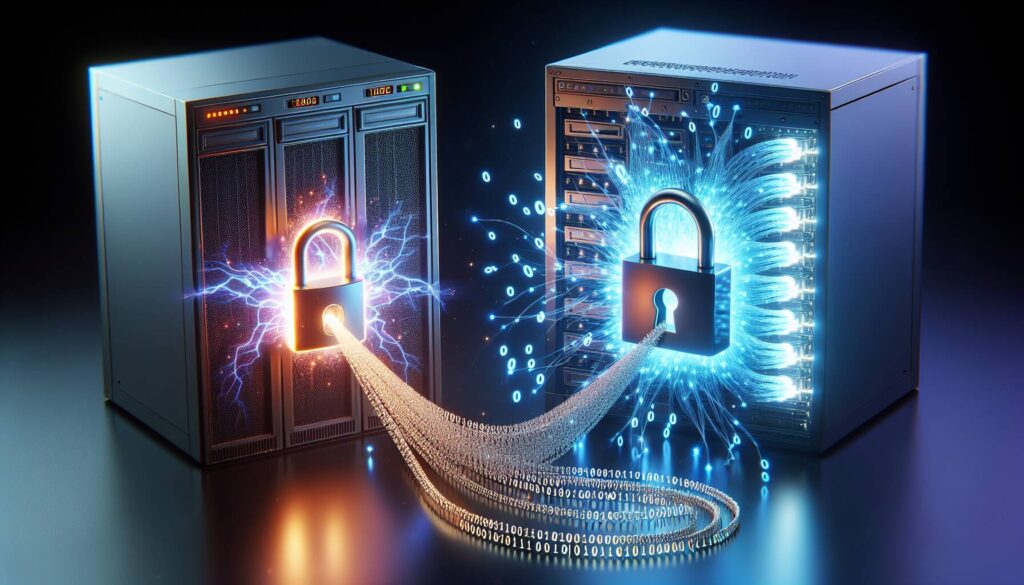A groundbreaking research paper by Google Quantum AI researcher Craig Gidney has stirred the waters of the cryptocurrency community by revealing that breaking widely used RSA encryption could require significantly less quantum computing power than previously thought—only 20 times fewer resources. While the paper did not explicitly reference Bitcoin (BTC) or other cryptocurrencies, its implications resonate deeply within the digital finance realm, where secure encryption methods are paramount for protecting crypto wallets and transactions.
RSA, a public-key encryption algorithm, serves as a foundational technology for secure communications, relying on a two-key system: a public key to encrypt data and a private key for decryption. Interestingly, Bitcoin itself opts for elliptic curve cryptography (ECC), a highly secure form of encryption that functions differently than RSA but can also be vulnerable to quantum attacks, particularly through Shor’s algorithm, which targets the very essence of public key cryptography.
“I estimate that a 2048-bit RSA integer could be factored in under a week by a quantum computer with fewer than one million noisy qubits,” Gidney remarked, highlighting a significant shift from his previous projections.
This statement directly contrasts with figures from Gidney’s 2019 study, which estimated the task would require an enormous 20 million qubits and approximately eight hours. It’s important to note that such a powerful quantum computer does not yet exist; the nearest contenders—IBM’s Condor and Google’s Sycamore—are still far from achieving the necessary performance to realize these capabilities, with available qubits numbering in the low thousands.
Quantum computing operates on the principles of quantum mechanics, utilizing quantum bits, or qubits, that can simultaneously represent both zero and one, thanks to phenomena such as superposition and entanglement. This characteristic allows quantum computers to perform multiple calculations at once, potentially solving even the most complex problems that traditional computers cannot.
As interest grows, groups like Project 11 are investigating whether today’s quantum hardware can break even weaker forms of Bitcoin’s encryption. Earlier this year, they introduced a public bounty of 1 BTC (approximately $85,000) for anyone able to crack tiny ECC key sizes ranging from 1 to 25 bits, a test not designed to endanger Bitcoin today but rather to gauge the proximity of current systems to such breakthroughs.

Impact of Quantum Computing on RSA and ECC Encryption
Key points from the research by Craig Gidney on quantum computing and its implications for encryption:
- Significant Reduction in Required Quantum Resources:
Breaking RSA encryption may need 20 times fewer quantum resources than previously estimated.
- Encryption Methods Under Threat:
The findings raise concerns over encryption methods securing crypto wallets and transactions.
- Importance of RSA and ECC:
- RSA: A widely used public-key encryption algorithm relying on two keys.
- ECC: Utilizes curves for secure data encryption, offering stronger security with smaller keys.
- Quantum Attacks and Timeline Compression:
Gidney projects that a 2048-bit RSA integer could be factored in under a week with fewer than one million noisy qubits.
- Current Quantum Computing Limitations:
No quantum computer currently exists that can execute these attacks; the most advanced processors have far fewer qubits.
- Active Research and Bounties:
The Project 11 group is investigating whether current quantum hardware can break weakened ECC key sizes and has offered a bounty to incentivize breakthroughs.
This research indicates a pressing need to enhance encryption methods to mitigate upcoming quantum threats, potentially impacting the security of cryptocurrencies and digital data.
Implications of Gidney’s Research on Quantum Computing and Cryptography
The recent research by Craig Gidney from Google Quantum AI brings to light a pivotal transformation in our understanding of quantum threats to encryption, particularly regarding RSA. Previously, it was assumed that breaking RSA encryption would necessitate an overwhelming quantum resource investment of 20 million qubits. However, Gidney’s paper drastically reduces this estimate to fewer than one million noisy qubits, which could pose significant risks to various encryption protocols. This groundbreaking realization underscores a competitive advantage for experts in quantum cryptography and cybersecurity, granting them early insights to fortify against potential vulnerabilities.
Comparatively, the implications extend beyond RSA encryption, touching on elliptic curve cryptography (ECC), which underpins Bitcoin and other cryptocurrencies. While ECC is presently more resistant, the same quantum algorithms could threaten its security as well. The reduction in resource requirements to crack RSA suggests that even the current standards of ECC may eventually be challenged, raising alarms for the crypto market and its users. The heightened urgency for robust encryption solutions presents opportunities for security firms and blockchain developers to innovate and bolster encryption practices proactively.
This research not only alerts cryptocurrency investors and holders to a looming quantum threat but may also place pressure on software developers and blockchain networks to reevaluate their security frameworks. The potential realities outlined by Gidney could create challenges for those who are slow to adapt, leaving them vulnerable to quantum attacks. Furthermore, as Project 11’s bounty initiative demonstrates, the race to break ECC is already underway, which could destabilize trust in digital currencies if successful. Hence, both pioneering quantum research and cryptocurrency ecosystems must stay vigilant in addressing these newly emergent threats, ensuring their systems evolve ahead of potential quantum capabilities.
















